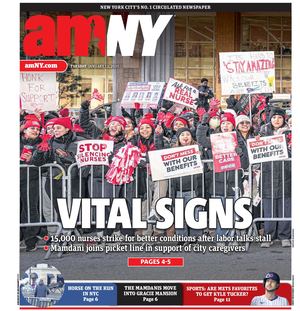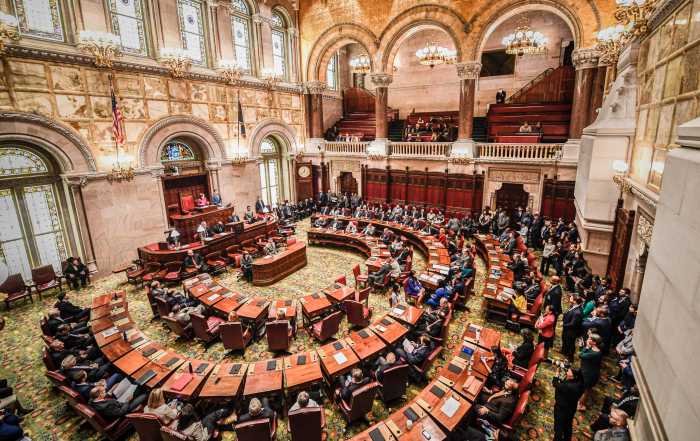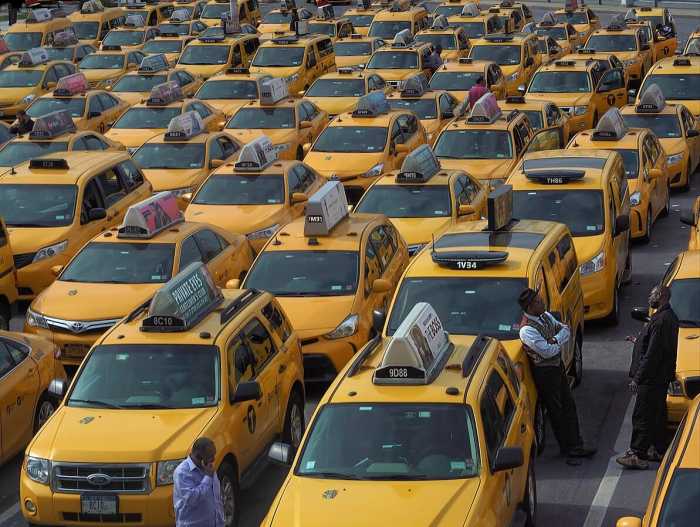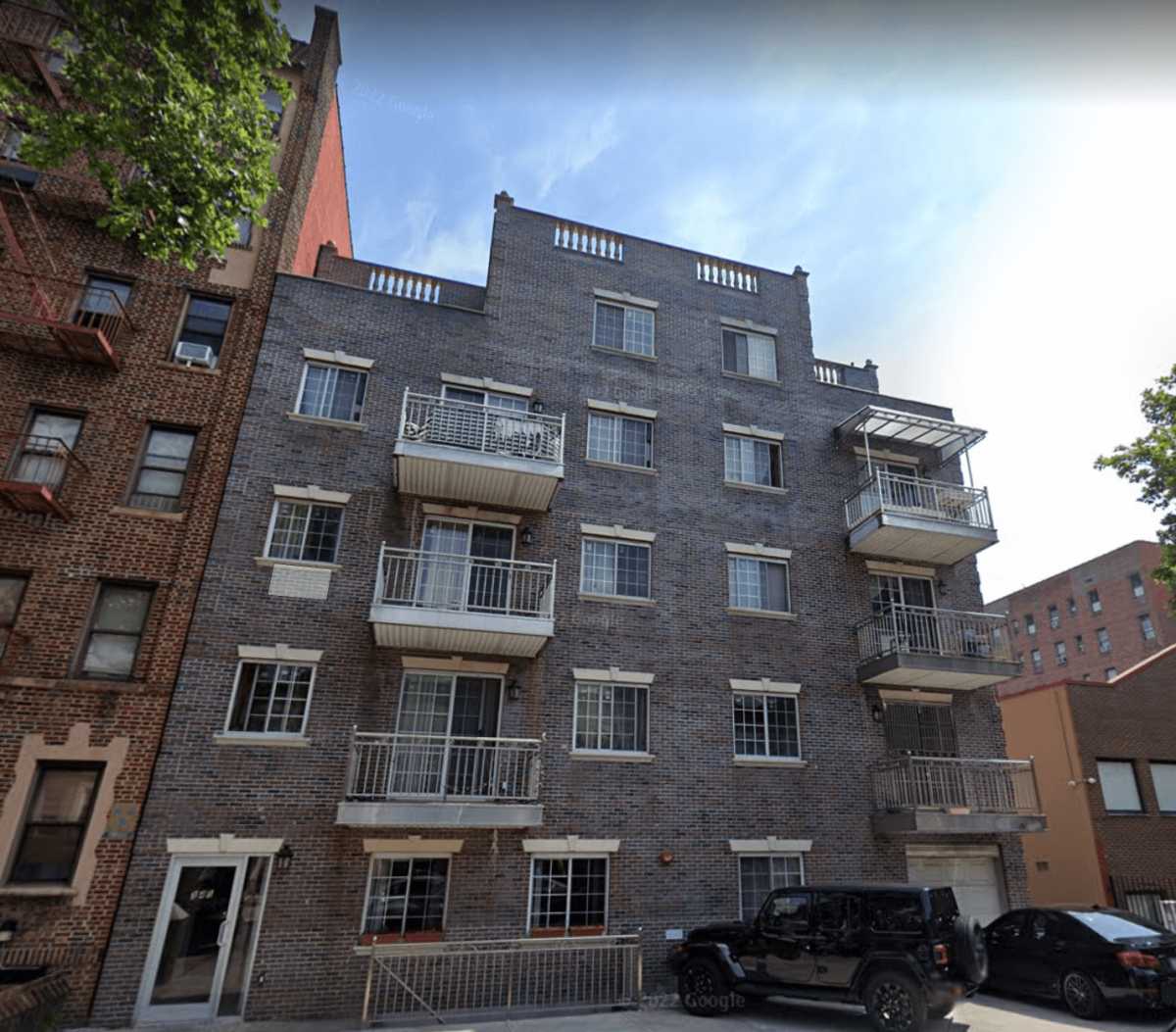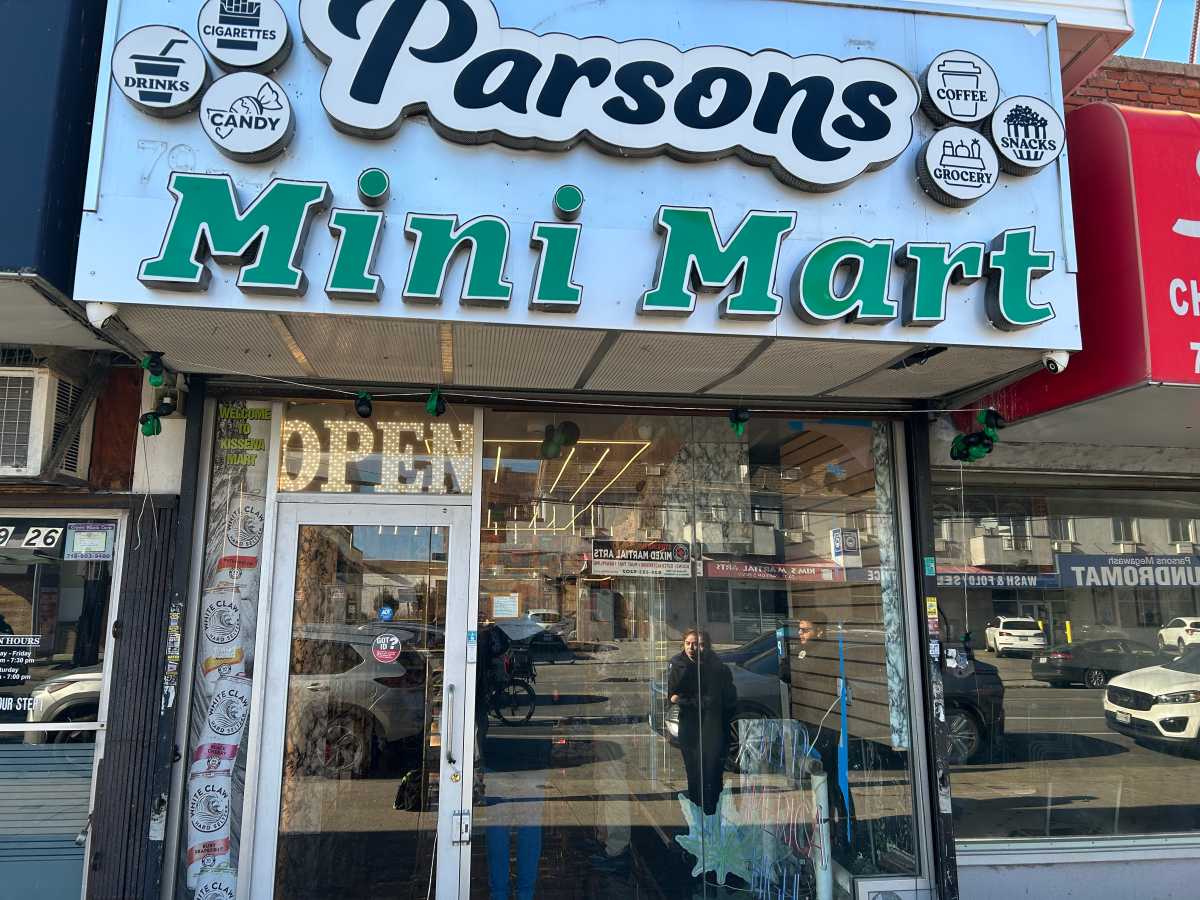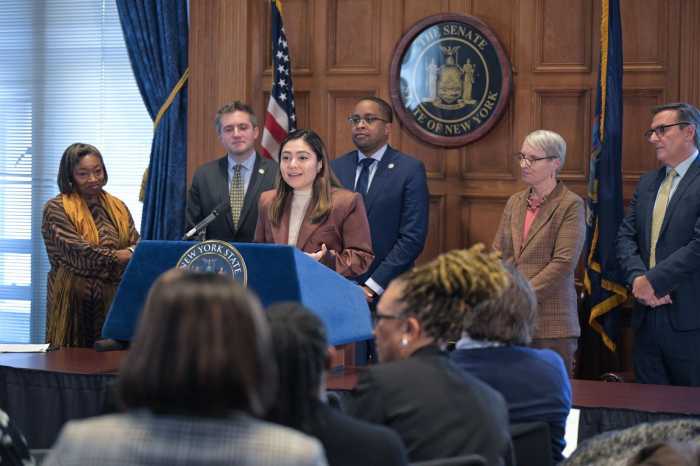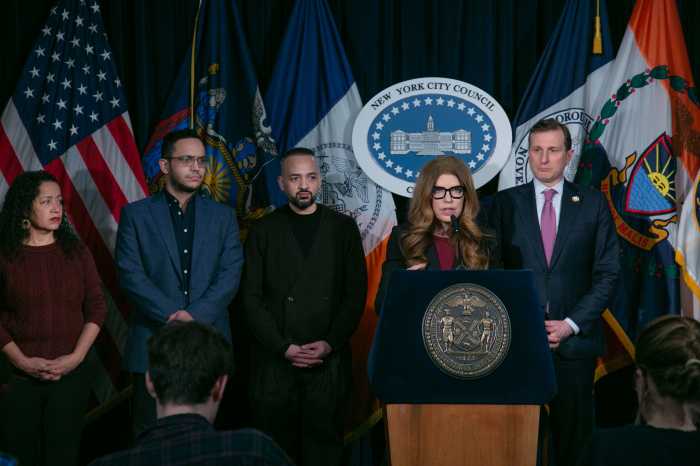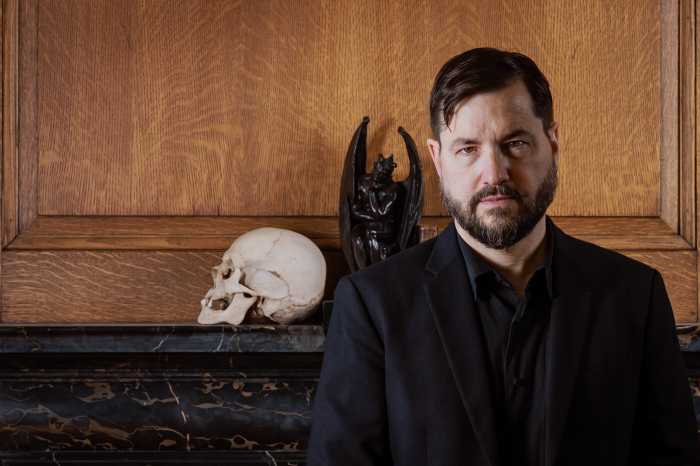Welcome to 2018, a testing ground of a year.
2016 was the roller coaster campaign that landed Donald Trump in the White House. And 2017 was a year of anti-Trump protest from Kennedy Airport to the National Mall.
New organizations popped up registering anger and dismay at the new president. There were marches and demonstrations, some of which seemed to have an impact, like stopping the Senate from outright repealing Obamacare. But sometimes the law of political large numbers held up, as when one-sided tax legislation was rushed through a Republican Congress.
That brings us to 2018, a distinctly political year. New York will host State Senate elections that could swing power firmly to Democrats. Gov. Andrew Cuomo seeks re-election. And some presidential hopefuls will begin racking up miles and building their cases, as Mayor Bill de Blasio and Vermont Sen. Bernie Sanders did at de Blasio’s second inauguration on Monday. But most of all, those protesters and groups and newly attentive progressive citizens will have their first real test: midterm elections to try to flip Congress in the fall.
Calm before the storm
Here are the emerging hints that we may see a Tea Party-like sweep of congressional races later this year:
- Democrats performed strongly in many of the closely watched special elections of 2017.
- Republicans most likely will have to answer for a historically unpopular president. Also stacked against them: the usual uphill battle during the first midterms of a new president’s term.
- To make matters worse, they’ll be explaining how it was that their major legislative accomplishment was a tax bill riddled with corporate and donor giveaways and whose meager tax breaks for voters will mostly disappear in a few years while those for corporations won’t.
Those daunting and partially inevitable factors are serious enough that Republicans who aren’t paid to spin on TV express concern about a tough political landscape in swing districts this year.
That’s where the test will take place. Will the new groups and angry citizens coalesce to put Democrats over the edge and retake the House of Representatives?
To inform your betting, it’s worth weighing the efforts of post-2016 national groups. Swing Left, for example, says they’ve raised more than $2 million to support Democrats who win their primaries. Some targeted districts are in our neighborhood, and Swing Left volunteers have sent eager anti-Trumpers to canvas in moderate or Republican areas on Long Island and Staten Island.
“We’re asking people to create a relationship with their swing districts, rather than just show up once,” says co-founder Ethan Todras-Whitehill.
Will people keep showing up and will the money approach significant levels? Will islanders of different varieties want to hear from their neighbors? Will anger about DC filter to other elections and primaries here?
The test for 2018
Then there are the local groups, made up of a few dozen or more friends or acquaintances who just wanted to do something after Trump’s election. Maybe they drove down to the Women’s March in DC, or joined an Indivisible chapter to resist the Trump agenda, or maybe they weren’t even explictly partisan but wanted a new level of engagement in civic life.
There’s plenty of those in NYC, too. In Brooklyn and Staten Island, relatively moderate Rep. Dan Donovan has found himself harried over the last year by groups like Fight Back Bay Ridge and Staten Island Women who March, who wanted to make sure he voted the right (or left) way on issues like health care and taxes. (He did, breaking with his party.)
The knock against some of these new, small groups is that they’ll push Democratic candidates too far to the left, which could be tough going in moderate districts where the going would be tough for Democrats anyway. For example, Sabato’s Crystal Ball, the University of Virginia Center for Politics prediction gurus, rate Donovan’s district as “likely Republican.”
“These far-left groups have one objective: electing the most liberal candidate in primaries across the country,” warns National Republican Congressional Committee spokesman Chris Martin, claiming those candidates could be “unpalatable” in general elections.
But that will be part of the test of 2018, too. How will the political energy coursing through New York and around the country fare? What will be the result of the organizing and protesting?
While Fight Back Bay Ridge co-founder Mallory McMahon says the group won’t be endorsing a congressional candidate in Donovan’s district, the Women who March will.
Co-founder Lorie Honor says they’ll be holding a “speed dating forum” with all the candidates (there are already multiple) and endorse closer to the primary. But ultimately, they’ll work for whichever Democrat wins.
And both groups have already started registering voters, from Brooklyn to the Staten Island ferry.
Like other organizers around the country, they’re hoping that work will pay off in votes in 2018, when it counts. Either way, it’ll be the story of the year.
